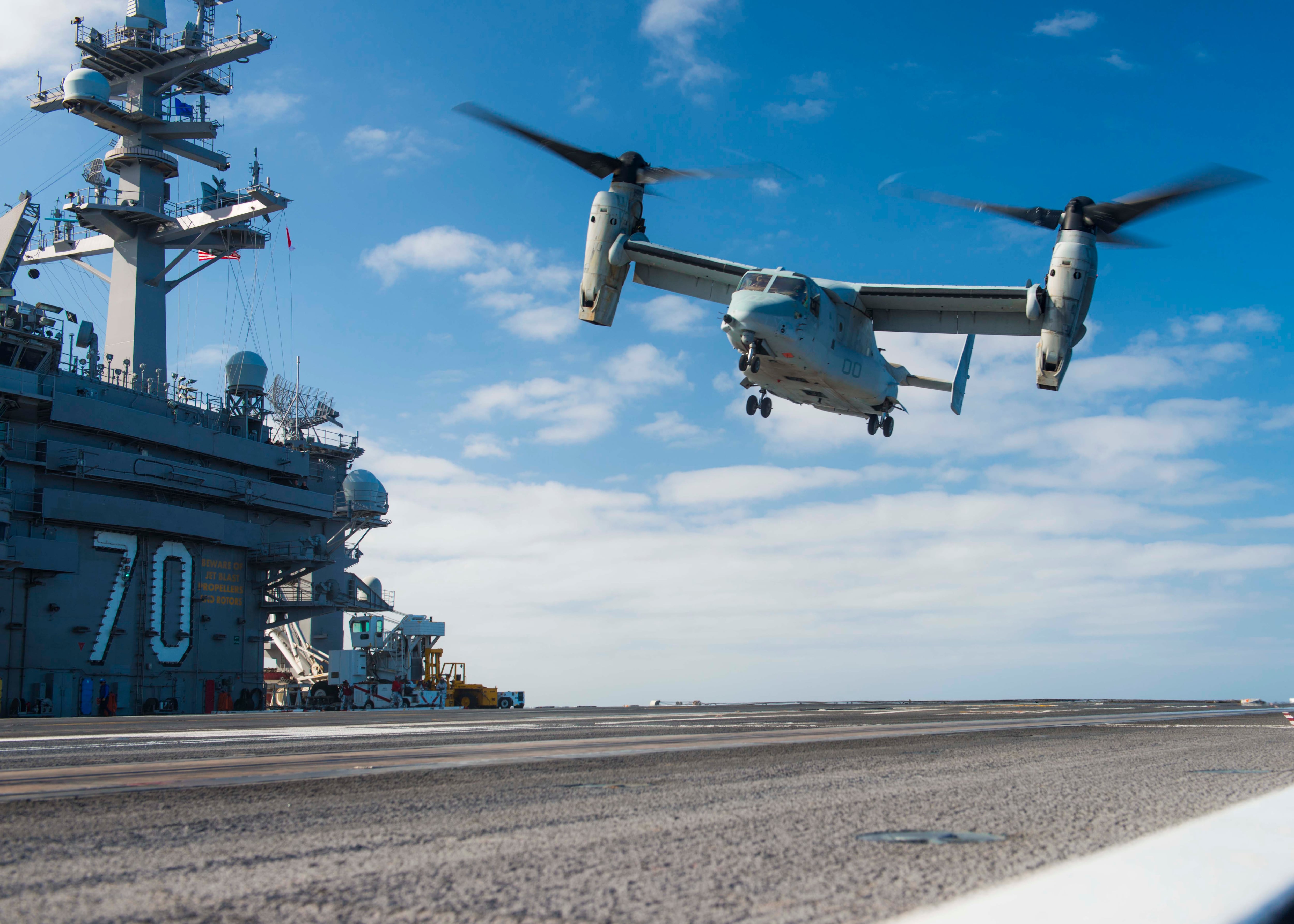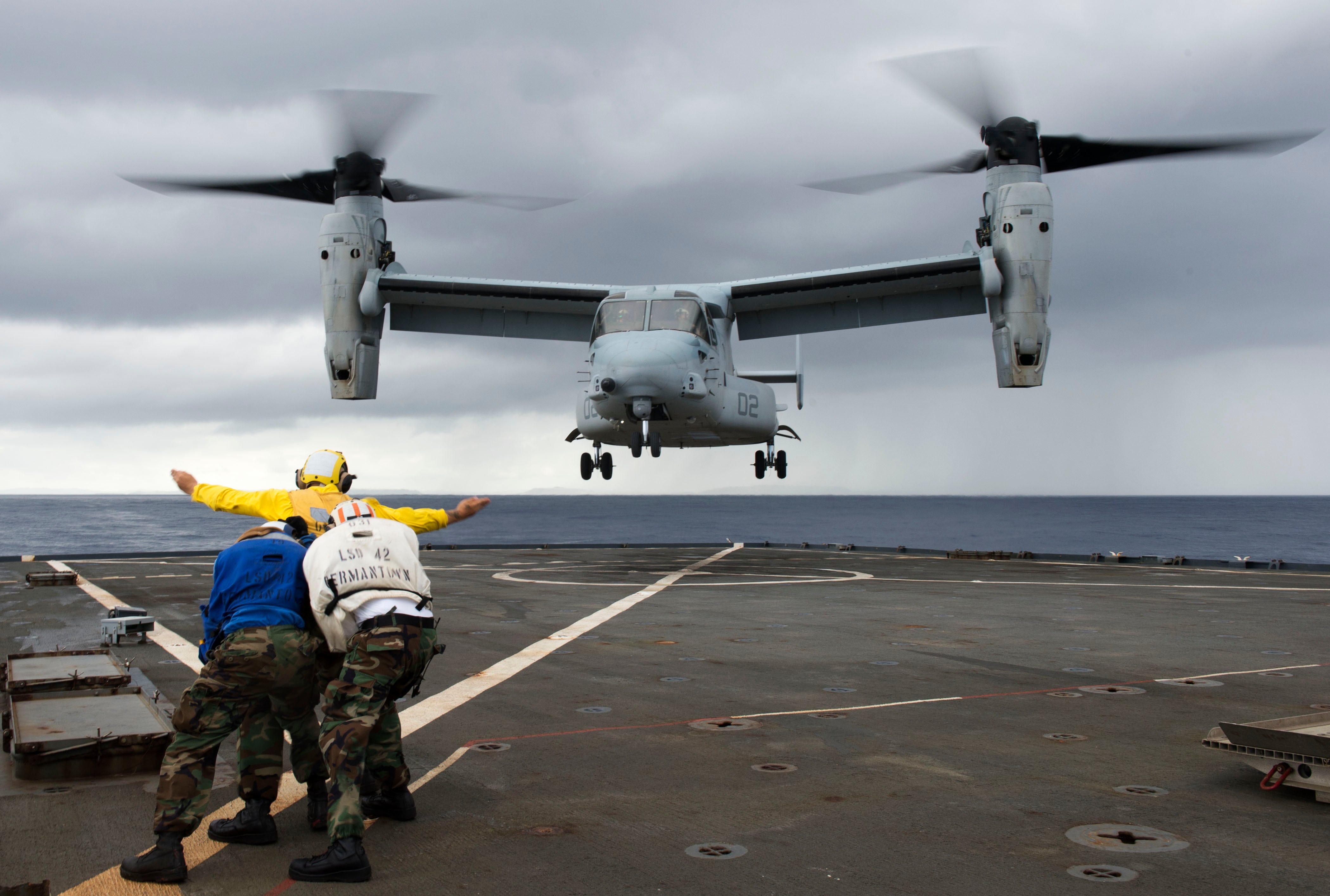Three people remain missing after a C-2 “Greyhound” carrier onboard delivery aircraft carrying 11 crew and passengers crashed into the Pacific Ocean on Wednesday while in passage to the carrier Ronald Reagan, the Navy said Wednesday.
Rescue efforts recovered eight personnel southeast of Okinawa at approximately 3:23 p.m. local time. Those eight individuals were taken to the Reagan for medical evaluation and were in good condition, the Navy said.
“Our Sailors are in my thoughts and prayers as we perform search and rescue operations for a downed aircraft in the Philippine Sea,” Chief of Naval Operations Adm. John Richardson said. “Eight of the 11 Sailors are safe and sound on USS Ronald Reagan. We continue to search for three.”
The cause of the crash was not immediately clear, Navy officials said.
“Our entire focus is on finding all of our sailors,” said Rear Adm. Marc H. Dalton, commander of Task Force 70. “U.S. and Japanese ships and aircraft are searching the area of the crash, and we will be relentless in our efforts.”
Despite the unknown circumstances, “the fact that at least eight of the 11 onboard have been rescued and are said to be in good condition implies that whatever happened to the Greyhound was not catastrophic, and that the crew had the time and means to ditch the aircraft in a controlled manner,” said Gareth Jennings, Aviation editor of Jane’s by IHS Markit.
The aircraft was conducting a routine transport flight carrying passengers and cargo from Marine Corps Air Station Iwakuni to Reagan, which was operating in the Philippine Sea as part of an exercise with Japanese military.
RELATED

The C-2 aircraft crashed about 90 miles northwest of Okinotorishima, a Japanese atoll, Defense Minister Itsunori Onodera said, according to a ministry spokesman.
The plane was taking part in an ongoing joint U.S.-Japan naval exercise in waters surrounding Okinawa from Nov. 16-26. The Navy called it the “premier training event” between the two navies, designed to increase defensive readiness and interoperability in air and sea operations.
The 7th Fleet has had two fatal accidents in Asian waters this year, leaving 17 sailors dead and prompting the removal of eight top Navy officers from their posts, including the 7th Fleet commander.
The Navy has concluded that the collisions were avoidable and resulted from widespread failures by the crews and commanders, who didn’t quickly recognize and respond to unfolding emergencies. A Navy report recommended numerous changes to address the problems, ranging from improved training to increasing sleep and stress management for sailors.
RELATED

Mishaps involving the C-2A airframe are rare, according to the Flight Safety Foundation’s Aviation Safety Network database. Since the 1960s, there have been nine aircraft losses, six of which were fatal, killing a total of 59 people.
The last fatal C-2A crash was in 1973, when a C-2A lost both engines and crashed into the Mediterranean Sea, killing seven of 10 on board.
The most recent incident came in 2005, when an unsafe landing gear indication light led to the aircrew making a belly landing at Chambers Field in Norfolk, Virginia. There were no fatalities and all personnel walked away.
The worst recorded C-2A crash occurred in October 1969, when six crew members and 21 passengers went down in the Gulf of Tonkin while flying from the Philippines to the aircraft carrier Constellation. All persons on board were killed and are officially listed as Vietnam War missing-in-action, as their bodies were never recovered.
Andrew Tilghman is the executive editor for Military Times. He is a former Military Times Pentagon reporter and served as a Middle East correspondent for the Stars and Stripes. Before covering the military, he worked as a reporter for the Houston Chronicle in Texas, the Albany Times Union in New York and The Associated Press in Milwaukee.
J.D. Simkins is the executive editor of Military Times and Defense News, and a Marine Corps veteran of the Iraq War.
Mark D. Faram is a former reporter for Navy Times. He was a senior writer covering personnel, cultural and historical issues. A nine-year active duty Navy veteran, Faram served from 1978 to 1987 as a Navy Diver and photographer.



